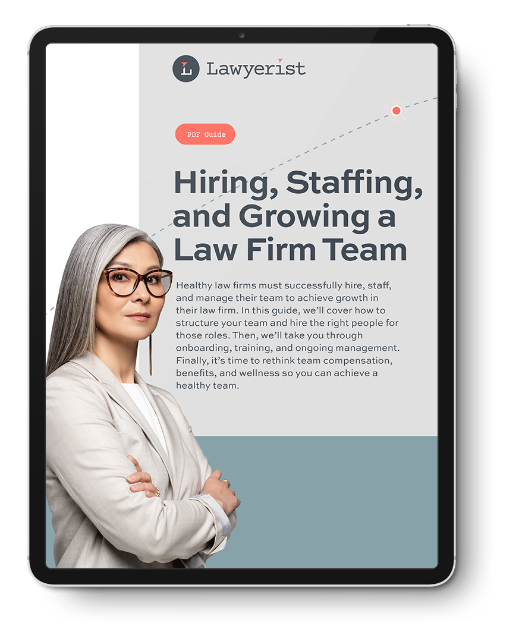You should also keep in mind that your accountability chart is not a static document. You should regularly revisit your accountability to make changes and updates as your firm changes and grows.
Delegating and Change Management for Law Firm Leaders
Now that you have your accountability chart made, you have a clear idea of who leads and manages what. Chances are, you’re at the top of your accountability chart as the main leader of your law firm. One of the more difficult things you have to do now is lead, not do. As the leader of your firm, your responsibilities are more complex and big picture. It’s important to continue to do the legal side of your work. But on the business side, ?focus on shaping the thoughts and ideas of your team rather than dictating their specific work plans. In other words, you have to learn to delegate.
It’s an instinct to want to protect what you’ve built. And you may hold on too much, being too controlling over your practice and colleagues. A simple way to identify whether you’re being too protective is to ask one question. If you took a week off work unexpectedly, would your law firm’s goals and priorities advance? If you said no or were unsure, you’re not leading. You’re micromanaging.
To delegate and manage changes effectively, you have to know your ultimate big picture goals and ideas. What are your reasons for the change? Once you have that in mind, write it down and share it with your staff. When your team understands the why, they’ll be able to better understand where they fit into the big picture and find personal relevance in their responsibilities. Help guide the main brushstrokes of your firm, but leave the details to those in specialized roles.
For example, you have an idea of what you want your firm’s marketing to be. But you don’t have the knowledge or expertise in the particularities of running a marketing campaign. You let your marketing department know what your goals are and add input along the way. Ultimately, though, you allow your marketing team to manage the finer details of your firm’s marketing campaign.
Stay mindful of your role, responsibilities, and expertise, as well as your staff’s roles, responsibilities, and expertise. You’ll be in a better position to delegate and empower others to achieve your law firm’s goals.
Now that the old law firm hierarchy model is out and you’re clear that you can’t do everything in your business, we’ll cover when and how to make the right hire.
